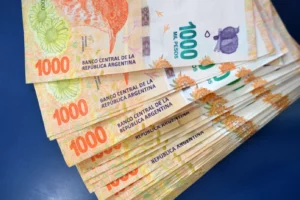
greatly lost value in early 2025.
Official government and central bank information expose the causes as a mix of policy modifications, trade imbalances, and shifting market dynamics instead of unexpected shocks.In April, authorities unwinded stringent currency controls and presented a handled exchange rate band in between 1,000 and 1,400 pesos per U.S.
dollar.
This shift permitted the peso to float more easily, leading to an instant decline of about 12%.
By July, the peso hovered around 1,275 per dollar, marking consistent devaluation.
Reserve bank reserves, key for maintaining currency stability, dropped to nearly $9 billion by April, far listed below international agreement targets.This low reserve level compromised Argentinas ability to support the peso against market pressures.
Tourism contributed to the dollar shortage.
Argentines spent $4.92 billion abroad throughout the first quarter however drew in just $1.45 billion from foreign visitors.This $3.47 billion deficit drained dollars from the economy.
Furthermore, less tourists originated from surrounding countries, dissuaded by the pesos previous synthetic strength that had actually made regional travel expensive.Behind Argentinas 2025 Peso Slide: Trade, Tourism, and Policy Intersect.
(Photo Internet reproduction)Agricultural exports remain a backbone for dollar inflows, but after a temporary tax break on exports ended in June, lots of farmers delayed offering their crops to wait on better currency conditions.Official reports verify exports slowed despite strong production forecasts, reducing the circulation of foreign currency.
Policymakers tried to include the situation through tighter cash supply controls and financial steps.
Diminishing reserves restricted their effectiveness.Inflation surged to around 180% annualized by July, wearing down buying power.
The minimum wage at that time just covered one-third of the standard food basket, further straining family budgets.This scenario shows how trade deficits, currency policy, and sector-specific factors integrated to press the peso down.
Businesses deal with uncertainty and households see rising expenses daily.Without stable export dollars, strong reserves, and well balanced tourism, the peso stays under continuous pressure.
The main data validates the pesos decrease arise from these interconnected forces instead of any single cause.

 10
10







